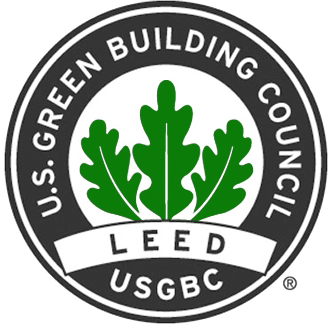
Introduction
 Leadership in Energy and Environmental Design (LEED) from the United States is one of the most popular green building standards around the world. The growing concern on global warming has led to increasing attention on LEED and green buildings in both industry and academia. Many studies have been conducted to analyze green building technologies and LEED project management, but the majority of the existing literature fails to address the following three four major gaps and limitations:
Leadership in Energy and Environmental Design (LEED) from the United States is one of the most popular green building standards around the world. The growing concern on global warming has led to increasing attention on LEED and green buildings in both industry and academia. Many studies have been conducted to analyze green building technologies and LEED project management, but the majority of the existing literature fails to address the following three four major gaps and limitations:
- LEED certifies green buildings into different grades according to the number of credit points each building has achieved. LEED managers often attempt to achieve as many credits as possible with limited budgets and resources. However, there is a lack of studies to explore the historical credit achievements and the relationship between credits in order to better facilitate the LEED project design.
- The majority of related studies focus on the achievement of the credits in one specific green aspect, and there is a lack of research on studying project management or target credit selection from the whole picture, including all the other green aspects such as sustainable sites and water efficiency.
- To better promote the development of green buildings, efforts from individual green buildings are not enough. Experts from the domain of city planning have been arguing that a top-down approach from the government to stimulate the green building markets would be a more efficient way. However, limited studies have been conducted to explore city planning from the perspective of LEED and green buildings.
- The majority of the existing studies on LEED and green buildings focused on only one or two specific cases. This made their findings less general and may not be applicable to other green building projects. As a result, data driven studies on large numbers of green building projects are needed in order to discover more general patterns and implications.
Objectives
 Therefore, to address the limitations and gaps mentioned above, this research aims at studying the achievement of LEED credits and green builidng related implications in city planning. In order to discover more general results from a large number of projects, data mining was used as the methodology of this study. The overall objective is to discover hidden knowledge from previous certified projects in order to contribute to the development of green buildings from both the bottom-up (individual project management) and top-down (city planning) perspectives. Study on individual buildings is intended to explore the hidden patterns from previous certified LEED projects to facilitate future project management, and is the bottom-up perspective. Study on green city planning, as the top-down perspective, is intended to explore proper city planning strategies or policies based on the group effect or regional demand of green buildings. Detailed objectives can be listed below:
Therefore, to address the limitations and gaps mentioned above, this research aims at studying the achievement of LEED credits and green builidng related implications in city planning. In order to discover more general results from a large number of projects, data mining was used as the methodology of this study. The overall objective is to discover hidden knowledge from previous certified projects in order to contribute to the development of green buildings from both the bottom-up (individual project management) and top-down (city planning) perspectives. Study on individual buildings is intended to explore the hidden patterns from previous certified LEED projects to facilitate future project management, and is the bottom-up perspective. Study on green city planning, as the top-down perspective, is intended to explore proper city planning strategies or policies based on the group effect or regional demand of green buildings. Detailed objectives can be listed below:
The bottom-up perspective:
- To analyze LEED credit achievements in previous green building projects using data driven techniques, thereby facilitating the complicated selection process of LEED credits.
- To develop a methodology for retrieving the past case studies of similar projects, thereby more specifically facilitating the LEED project design for each individual green building project.
The top-down perspective:
- To investigate the potential influence of climate factors on the achievement of LEED credits.
- To explore different kinds of city factors such as economy and educational factors that would affect the development of LEED markets, thereby identifying potential locations suitable for developing green building markets.
- To investigate the influence of demographical features and social features on the regional building energy performance in an urban scale, thereby helping city planners understand the overall energy consumption, and suggest potential regions as the focus of developing green and energy efficient buildings.